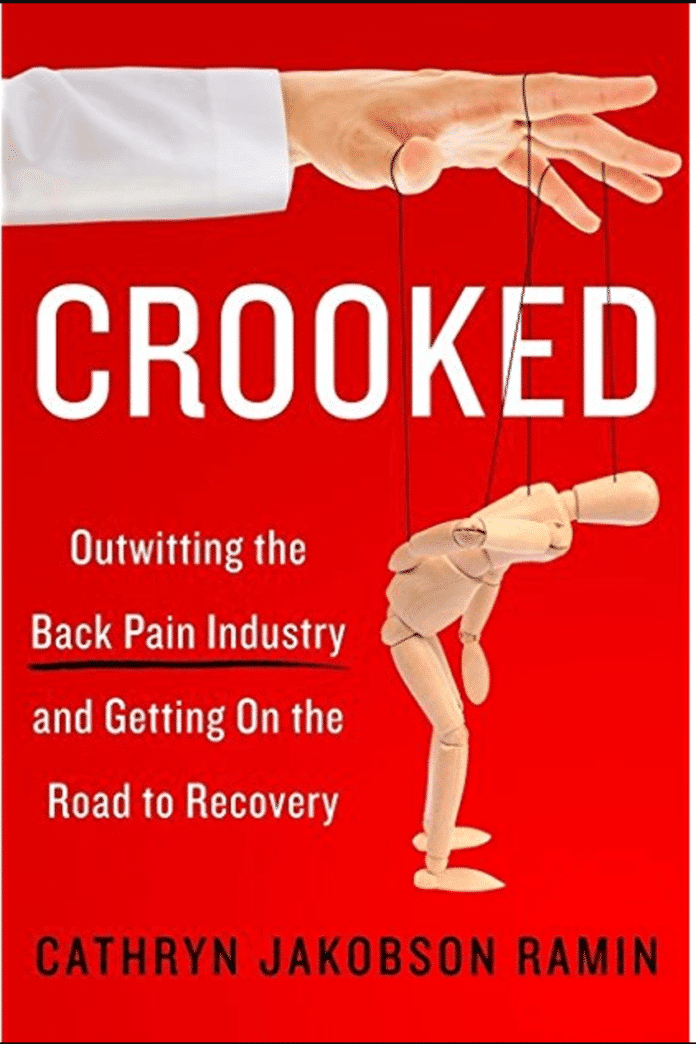
I’ve been reading this new book, Crooked: Outwitting the Back Pain Industry by investigative journalist Cathryn Jakobson Ramin, which makes a point that some cures – an appalling $100 billion worth to be exact – are worse than the disease.
Back pain is a pretty widespread condition. According to the National Institute of Neurological Disorders and Stroke, about 80 percent of adults experience low back pain at some point in their lives, and it’s the second most common cause of disability in the United States. Men and women are equally affected.
The severity of back pain ranges from acute to chronic. Most low back pain is short-term and resolves on its own without a loss of function. Pain that lasts 12 weeks or more is considered chronic.
The back pain industry
Treatment for the condition is where the back pain industry comes in. Cures vary depending on whether it’s acute or chronic. Simpler treatments can include hot or ice packs and limiting bed rest (and continuing regular activities without bed rest). For chronic back pain, a multitude of treatment options exist, from acupuncture surgery.
Related post: Posture and Back Health
Ramin shares in her book that she had struggled with chronic back pain for decades, stemming from an incident when she was 16: she flew off her horse and landed on her hip. She spent $8,000 on a minimally invasive surgery, but her pain didn’t subside. It even appeared that the surgery gave birth to neck aches that weren’t there before.
The back pain industry offers many cures that should address the pain. The most common surgery patients opt for is spinal fusion surgery – essentially a “welding” procedure that fuses together multiple vertebrae into a single bone to make the spine stable. That gets a $40 billion-slice of the $100 billion industry, although the success rate is a measly 35 percent.
Shifting perspective
Ramin said her goal with her book is to give proper context to what the back pain industry offers patients, and to provide patients with information needed to make good decisions. She says that seeing a chiropractor for more than one to two sessions is a waste of time and that they don’t solve back pain.
Related post: Elbow Tendinitis
As a professional photographer, my neck and low back are constantly pushed to hold positions that are terrible for my back health. Add in the iPhone forward-head disorder that we all seem to have, and I find myself speaking to some sort of doctor, massage therapist, or physical rehab person regularly. These professionals really save the day for me. But clearly not all professionals have our best interests in mind.
While patients funnel so much money into the back pain industry, two simple things can solve the condition, Ramin says: exercising and shifting our perspective on back pain. To do the latter, she suggests finding someone who has an understanding of the musculoskeletal system and can help you build strength and more effectively balance your gait.
Find out more about Ramin’s book here. To learn more about back pain, click here.



